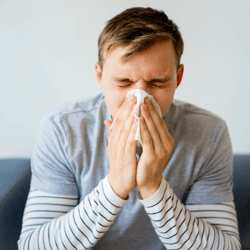In this article, we examine the risks of indoor pollution in work environments, the health symptoms it can cause, and the importance of air filtration systems.
In recent years, there has been growing attention on pollution in work environments, particularly concerning dispersed dust and pollutants, as well as the health risks associated with prolonged exposure.
While measures are taken to limit the spread of pollutants outdoors, it is important to remember that industrial regulations set maximum limits for pollutants in indoor environments to protect the health of those who work daily in these settings and to reduce emissions to the outside environment.
Whether it is fumes, dust, or oily substances, breathing contaminated air during working hours can compromise not only productivity but also cause significant health damage.
Symptoms, risks, and health consequences
Exposure to stale and unhealthy air can negatively affect environmental comfort and indoor air quality. The main immediate effects include:
-
Unpleasant odors and heavy air
-
Sensory discomfort
-
Irritation of mucous membranes
-
Coughing, dry mouth, and eye redness
-
Headaches, nausea, and dizziness
These symptoms, in addition to reducing worker productivity, can also affect the condition of the equipment: accumulated dust may cause more frequent breakdowns and premature wear of machinery.
Prolonged and continuous exposure to contaminated air carries even more serious risks, such as the development of asthma and, in severe cases, respiratory system cancers. For these reasons, it is essential to design and install proper air filtration systems capable of ensuring healthy and safe work environments.
Protecting air quality in work environments means safeguarding workers’ health and improving equipment performance. Download the full document listing the main industrial pollutants and their effects on both the environment and worker health.









